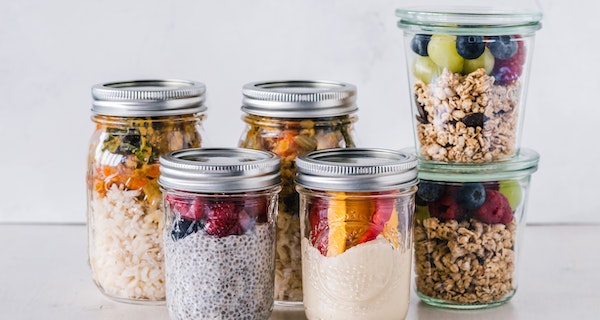You decided to eat healthy – great. However, you lack some knowledge of how to prepare healthy food. Today there is a lot of talk about healthy food and, in the sea of all that information, one simply does not know where to start. Which foods are actually considered healthy and what is combined with what? To get answers to these and similar questions, let’s first define what healthy food is.
What is healthy food?
Eat as much raw food as possible.
Healthy food means “living” food that will give you the energy you need. That is why it is best to eat as much raw food as possible and avoid, first of all, frying, baking, and then cooking. When you eat raw food, you make the most of the enzymes from it. Enzymes actually help food to be better digested and therefore absorbed.
Although our body produces its own enzymes, their quantity is not sufficient, and the body spends a lot of energy to produce them. That is why fatigue and sleepiness can often occur after consuming large amounts of thermally processed food. You yourself have probably noticed how, after a large meal, you become sleepy and exhausted. This happens because the body directs all its energy to deal with the ingested food and neglects normal functioning.
Also, what remains in the stomach rots and represents a great potential for the occurrence of various diseases. That is why it would be ideal to include at least one raw meal in your diet during the day, and maybe more, in order to save more energy for other daily activities.
In addition to raw meals, it is necessary to eat cooked food.
In addition to raw meals, it is necessary to have cooked meals, because some foods simply require cooking. Such is the case, for example. with legumes, because otherwise they are poisonous. Peanuts are one of the few legumes that do not require heat treatment.
Cereals should also be thermally processed and you can use them to make integral bread and various types of pastries. You can also consume various cereals in the form of flakes, which should be pre-soaked in water or thermally processed. However, read the declarations and be sure to avoid sugary flakes, which usually contain harmful additives!
Mushrooms are another type of food that should be thermally processed (the best option is definitely chopped mushrooms).
Some foods do not require heat treatment, although it is preferable to eat them ground (flax, chia, hemp seeds and sesame). You can eat others unground (sunflower, golica – pumpkin seeds) or you can pre-bake them. In any case, it is best to eat ground seeds because of their better absorption.
As for nuts, you can eat them raw after soaking them in water, and you can also eat them blanched and/or roasted. Eat a variety of nuts. You can use them to make various spreads, milk, cheese, cakes, salad dressings, etc. Permitted daily intake of nuts ranges from 20 to 60 grams (about 1-2 handfuls), depending on your psychophysical activity, muscle mass, gender and age. For ease of review and memorization, the following is a list of healthy foods that should be consumed:
1. All kinds of fruits and vegetables (make sure you don’t eat fruits and vegetables in the same meal and avoid dried candied fruits).
2. Legumes (beans, peas, green beans, peanuts, chickpeas – raw chickpeas, soybeans, lentils).
3. Cold-pressed oils (hemp oil, wheat germ oil, coconut oil, olive oil, pumpkin oil, flax oil, sunflower oil, etc.).
4. All types of nuts (walnuts, Brazil nuts, cashews, almonds, hazelnuts).
5. All types of seeds (chia, flax, hemp, gollica, sunflower).
6. All edible mushrooms.
The aforementioned foods together are abundant in healthy fats, essential amino acids, dietary fiber, vitamins and minerals, i.e., antioxidants. Daily intake of these foods has been proven to reduce the risk of various diseases.


